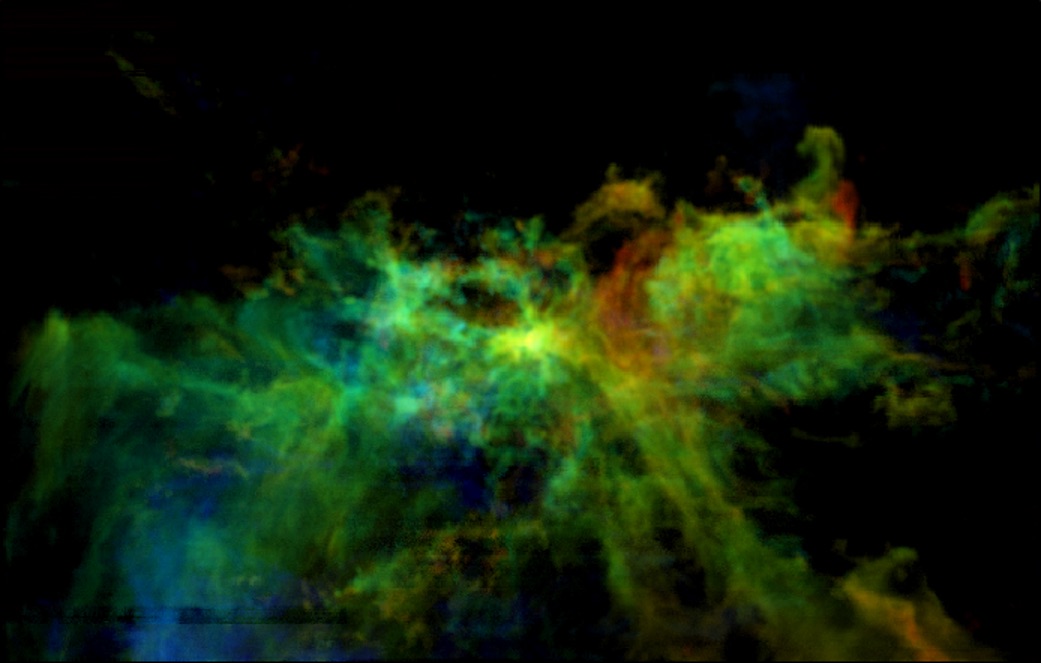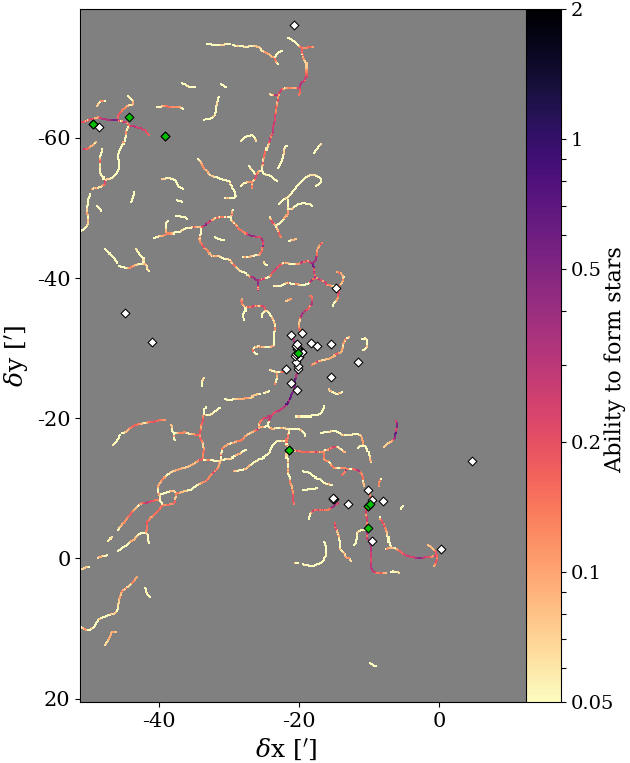News
Filaments around the Horsehead Nebula are still too young to form stars
An extensive observational survey of the Orion B molecular cloud shows why so few stars are forming in its dense gaseous filaments, despite the fact that the cloud shares similarities with other star forming regions. "For its size and mass, Orion B is known for its very low star formation activity. It can be due to the fact the filaments it contains are relatively young" says Jan Orkisz (IRAM & Chalmers University).
Orion is not only one of the most famous regions in the sky, it is also the region of massive star formation closest to us in the Galaxy, which makes it a particularly interesting target. One can study the way interstellar matter accumulates, how stars are born and how they impact their nebulous surroundings, all in the same place. Studying Orion thus helps understanding all the stages of the cycle through which the Galactic matter goes.
 |
| "The Orion B molecular cloud, with the Horsehead nebula in the upper right corner, as traced by the 13CO molecule observed with the IRAM 30-m telescope. The brightness represents the density of the gas, while the colours encode its motions: regions depicted in blue are approaching us, regions in red are receding. |
To expand our knowledge of this unique region, the ORION-B (Oustanding Radio-Imaging of OrioN-B) project has been launched by Jérôme Pety (IRAM) and Maryvonne Gerin (Observatoire de Paris). This observational survey is mapping half of the Orion B molecular cloud using the IRAM 30-meter radiotelescope, and detecting tens of molecules present in the interstellar gas. "The observations provide both a high spatial resolution, which allows to distinguish small structures in the cloud, and high spectral resolution, which allows to characterise the motions of the molecular gas", comments Pety. "And the great diversity of molecules that we have mapped throughout the cloud allows to study specifically the different environments in which these molecules are emitting radiation".
In a new study led by Orkisz, the C18O molecule has been used to explore the environment containing the gaseous filaments present in the cloud. "Within molecular clouds, chaos, driven by turbulence, and order, driven by gravity, are competing with each other. Filaments form a skeleton of dense gas, and trace the interface between these two mechanisms: their formation is regulated by turbulence, and their internal evolution by gravity" explains co-author Nicolas Peretto (Cardiff). “Filaments are also a key stage in the star formation process: they fragment into dense cores bound by gravity in which the new generations of stars can form.” Hundreds of such filaments have been identified in a field of two square degrees (about 10 times the apparent area of the Moon), and their characteristics measured. The result is a surprising mix of typical and very unusual properties for such objects. They display a typical diameter of the order of 0.12 parsec, close to what has often been observed in other clouds; their locations are close to young stars, which highlights their well-known role in the star formation process; some of them fragment into strings of dense cores, which is the stage preceding the formation of protostars; their motions show signs that turbulence gets dissipated inside the filaments. On the other hand, the filaments are ten times less dense than what is usually observed, they display higher temperatures than usual, and are more turbulent and less bound by gravity than expected.
 |
| The skeleton of gaseous filaments identified in Orion B. The colour scale encodes their starforming properties: the yellow filaments have a lower probability to form stars than the black ones. The former case happens for filaments closest to the (very) young stars marked by green and white symbols. |
"Comparing the filaments of Orion B with other clouds, such as Orion A where the filaments are more massive, gravitationally bound and actively forming stars, can be a sign that Orion B is a very peculiar cloud. Because of its size and mass, it is known for its very low star formation activity" says Orkisz.
"However, we rather interpret it as the fact that Orion B is a cloud in an early evolutionary stage: its filamentary architecture shows similarities with more evolved environments, and star formation in the filaments might become more active in the future." If this is the case, then it also shows that filaments play an important part early in the evolution of interstellar matter, as they start to structure the gas before gravity has taken over.
Contacts:
Dr. Jan Orkisz, Chalmers University of Technology
Dr. Nicolas Peretto, Cardiff University
Dr. Jérome Pety, IRAM
Karin Zacher, IRAM Public Outreach Officer
Further Information:
The paper is published in Astronomy & Astrophysics, 624, A113

